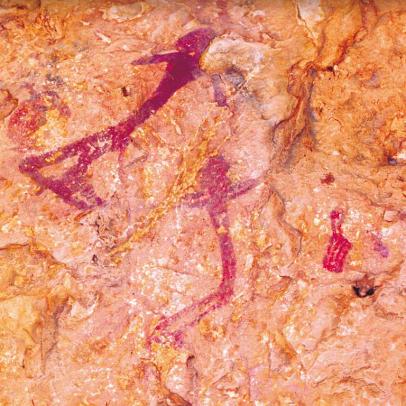The limestone mountain ranges of dels Ports are home to dozens of rock-shelters containing representations in Levantine art. One of the most important regions containing the so-called Levantine rock paintings of the Mediterranean Basin on the Iberian Peninsula is the province of Castellón. Some of the rock-shelters of the province of Castellón are part of the group of rock-art sites known as Rock Art of the Mediterranean Basin on the Iberian Peninsula, which was collectively declared a World Heritage Site in 1998.
The Rock Art of the Mediterranean Basin on the Iberian Peninsula is found along the Mediterranean seabord, running from the Pyrenees to Eastern Andalusia. Levantine prehistoric rock art was created between 10000 BC. and the Copper Age; i.e. around the year 4500 BC. As for schematic rock art, it was created between the years 5000 BC and 3000 BC (these art sites belong to the Metal Age).
The cave paintings of Morella la Vella, which belong to the Levantine cycle, are placed close to a country house called Morella la Vella. That is to say, they are located on a mountainous area where areas of dry non-irrigated land mix with groves of helm oaks and black pine. The cave paintings mostly include realistic hunting scenes. Ibex is the most frequently depicted animal in these representations. As for the rock-shelters containing the paintings, they include the following: Barranquet, del Llepús or Partició, Coveta de la Cornisa and the shelters of Alta and Roure. Note that not all of them are open to the public.
Visits. Visitors wanting to access these sites need to book in advance a guided tour. For detailed information please contact the tourist information office of Morella.
Rev. PAB 19.12.18







